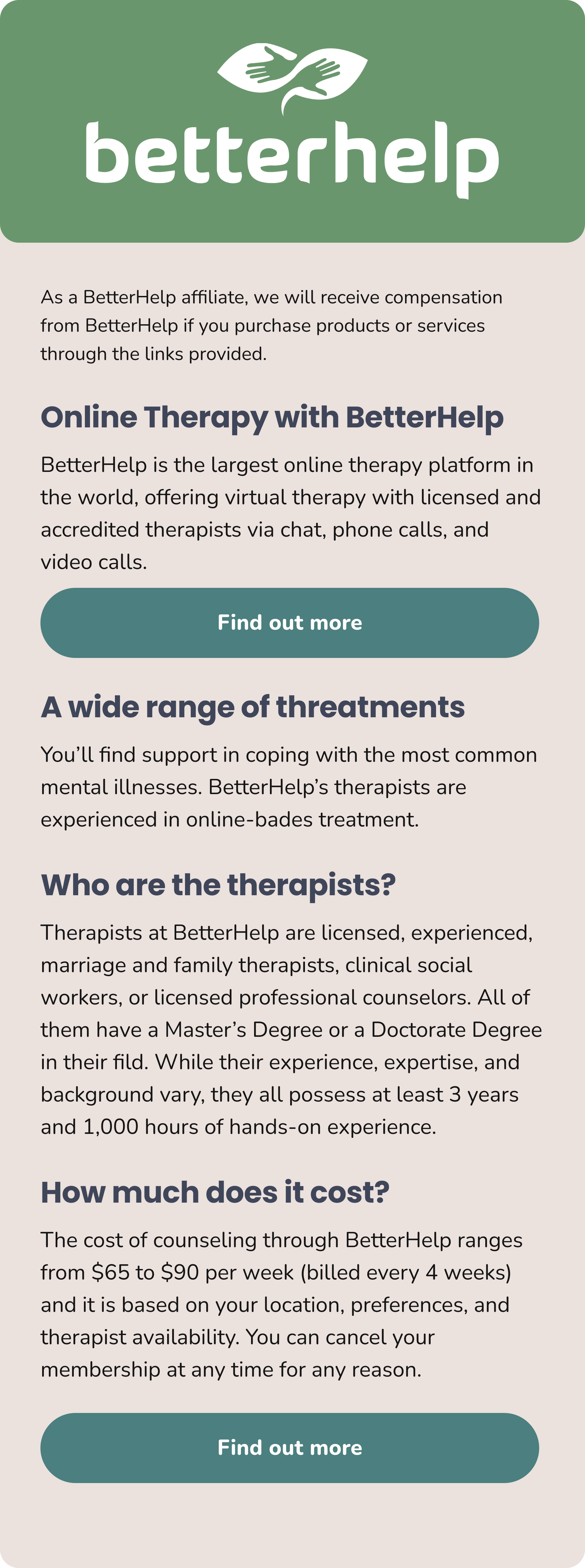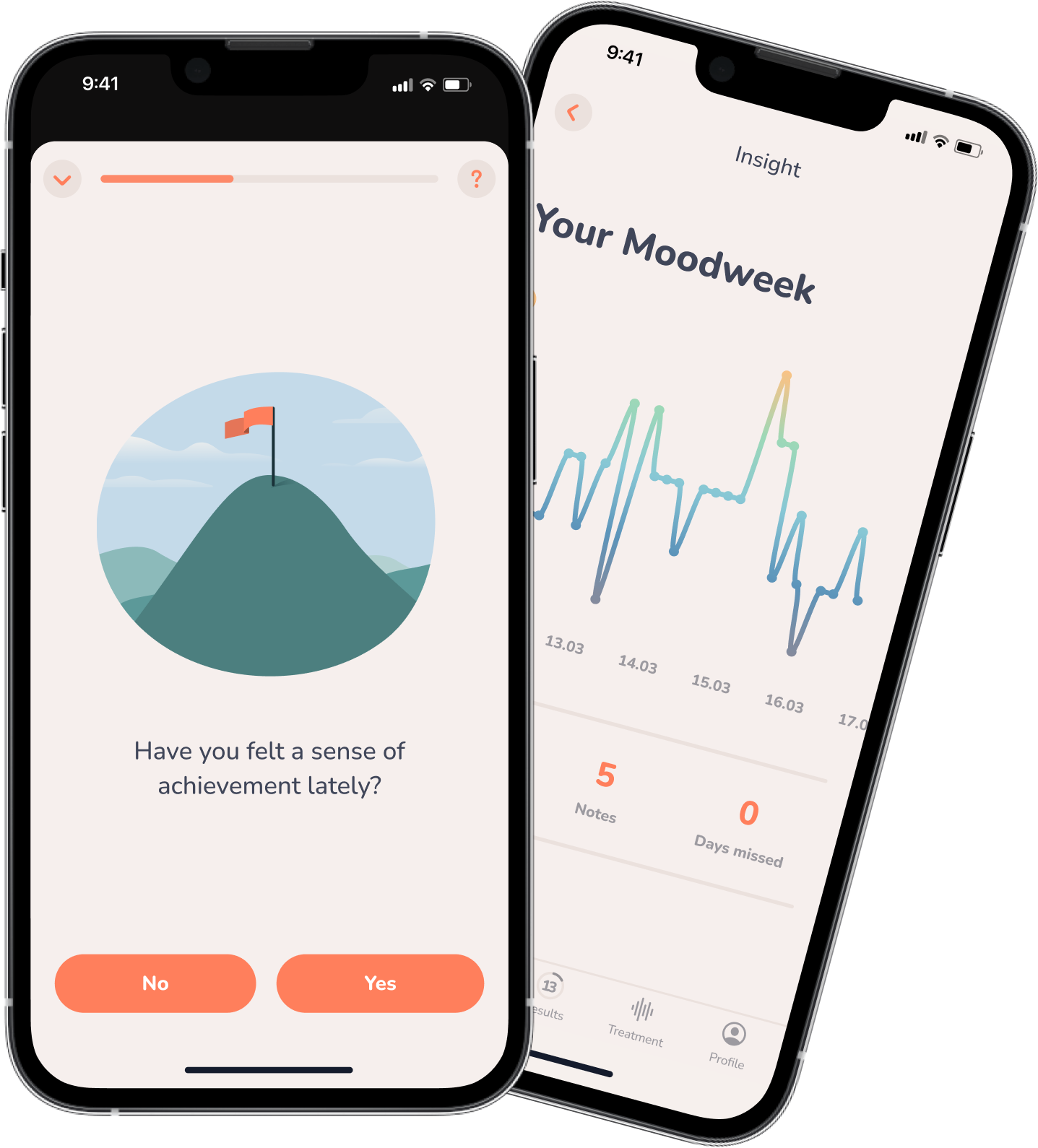Insight
Cognitive Behavioral Therapy for Depression
Are you familiar with one of the most evidence-based psychotherapy approaches, called “cognitive-behavioral therapy”? Have you ever wondered what actually happens in a therapy session? CBT is all about being able to help yourself – and the therapist provides the instructions and tools that you need. Find out if it’s the right approach for you.
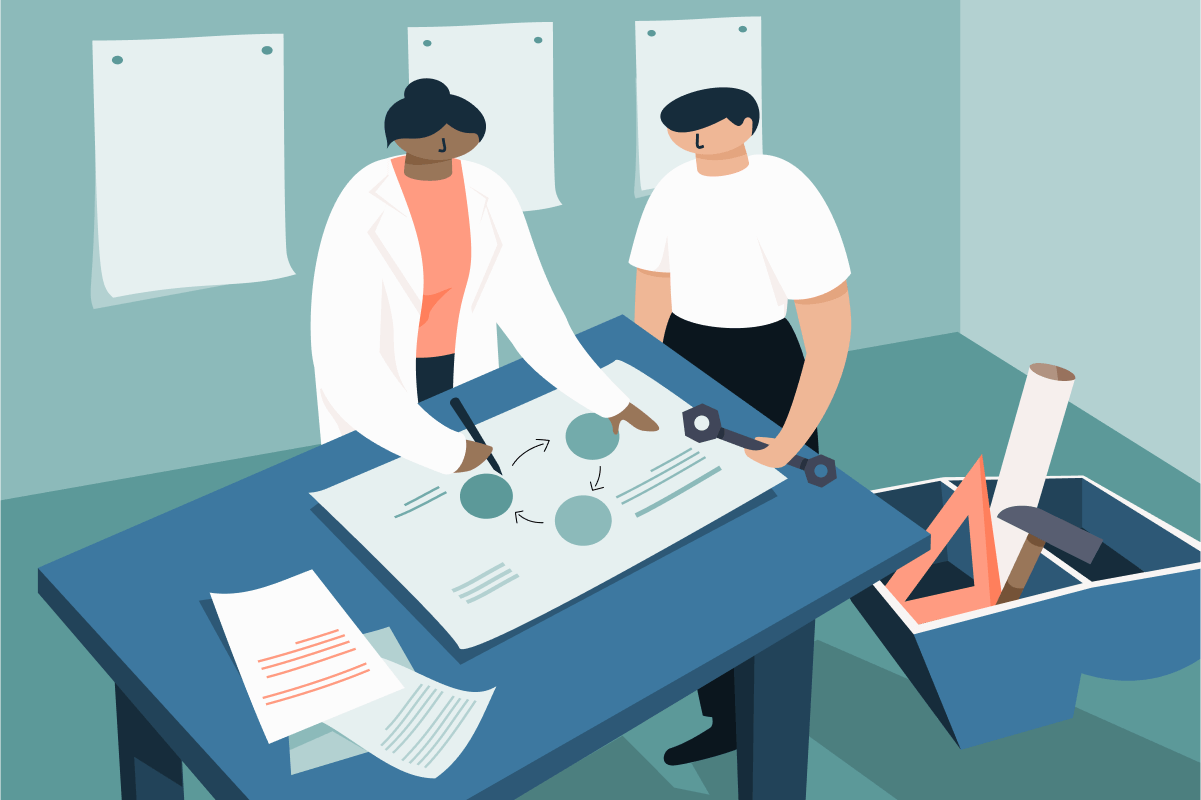
How Does CBT Explain Mental Problems?
Throughout life, we learn different patterns of behavior and thought patterns that we use on a daily basis to solve problems and make decisions. These patterns are formed by schemes and core motives, for example our insecure and weak self-image opposed to perceiving others as competent and strong, which can lead to us suppressing our own desires and opinions. However, if we learn these kinds of inappropriate behaviors or develop thinking errors, these can result in mental health problems, like depression. An example of a thinking error could be “I couldn’t do this project. I never do things right!” or “My boss looks mad, I must’ve made a mistake.” This insecurity will be reinforced by negative social interactions in our every-day life, for example with our boss who tends to criticize our work a lot and thus manifest itself in negative thoughts and behavior.
Therefore, the aim of the therapy is to identify current behavioral and thinking patterns and relearn helpful or new ones that help you effectively cope with current problems and actively reduce your unwanted feelings and behaviors. The therapist actively helps you to deeply understand and change your ways of thinking by taking examples from difficult situations in your life.
What Happens in the Therapy Sessions?
The first session is a time for you to get to know the therapist and see if your “chemistry” fits. You should not underestimate the importance of this session, as the connection between you and your therapist is the basis for the success of your treatment. Do you have a good feeling about the therapist? Will she or he be able to understand and help you? Ask yourself these questions before deciding to continue therapy with that person. If all goes well in the first session, you’ll likely meet once a week over the course of several months or years.
The early part of therapy is a time for the therapist to understand the problem and situation you are currently dealing with. In this phase, you’ll explore your depressive symptoms and their consequences on cognitive, behavioral, and emotional levels—in other words, together you and your therapist will explore the ways you think, behave, and feel about your current circumstances. Once this initial phase is done, the therapist will work with you to learn techniques and methods toward helpful behaviors and thinking patterns.
Things Your Therapist Is Likely to Address
- Look for ways to incorporate activities you find pleasing provide opportunities for successful, empowering experiences (e.g., meet old friends or (re)start a hobby)
- Reduce negative experiences (e.g., looping, negative thoughts or lying in bed all day)
Build skills (e.g., improve social and problem-solving skills and learn relaxation techniques) - Change negative and biased thinking patterns to learn new ways of approaching problems and evaluating thoughts
By the end of the therapy, the focus will lie on preventing any future depressive episodes. The therapist will help you apply your newly learned skills so that you can successfully cope with future challenges or situations on your own.
What’s New?
CBT is always being further developed and there are a few new approaches that deal with focusing on emotions, values, and acceptance, that have been proven to be successful. One of them is called “Mindfulness Based CBT” and combines CBT with mindfulness meditation. Through mindfulness, you learn to focus on the present moment, identify more easily what makes you feel depressed, and not judge your feelings, such as sadness or worrying.
Another newer approach, “Acceptance and Commitment Therapy (ACT),” focuses, as the title suggests, on accepting your current situation. Through this technique, you learn to accept symptoms of depression, rather than fight against them. Your self-image is an important part of this therapy, as you and your therapist will try to find out what kind of attitudes and values are important in your life and how you can turn them into “ACTion.”
“Cognitive Behavioral Analysis System of Psychotherapy (CBASP)” is a newer approach of CBT. It was specifically developed for long-term and chronic depression and combines CBT with psychodynamic approaches.
Is CBT Appropriate for Me?
As with anything, one shoe does not fit all. The treatment option that is best for your symptoms and current state depends on several factors such as the severity of your symptoms.
Cognitive behavioral therapy (CBT) has been proven to be one of the most helpful methods for treating depression. It also lowers the risk of experiencing another depressive episode.
However, with a moderate or severe depressive episode, it is best to immediately look for long-term depression treatment, such as a combination of psychotherapy and medication. Besides CBT, there are also other common types of therapy which might also be a good alternative for you. Don’t hesitate to get help if you’re feeling overwhelmed by your depression.
If you think you might be experiencing depression, you can read about typical signs of depression and use MindDoc for a free assessment of your symptoms.
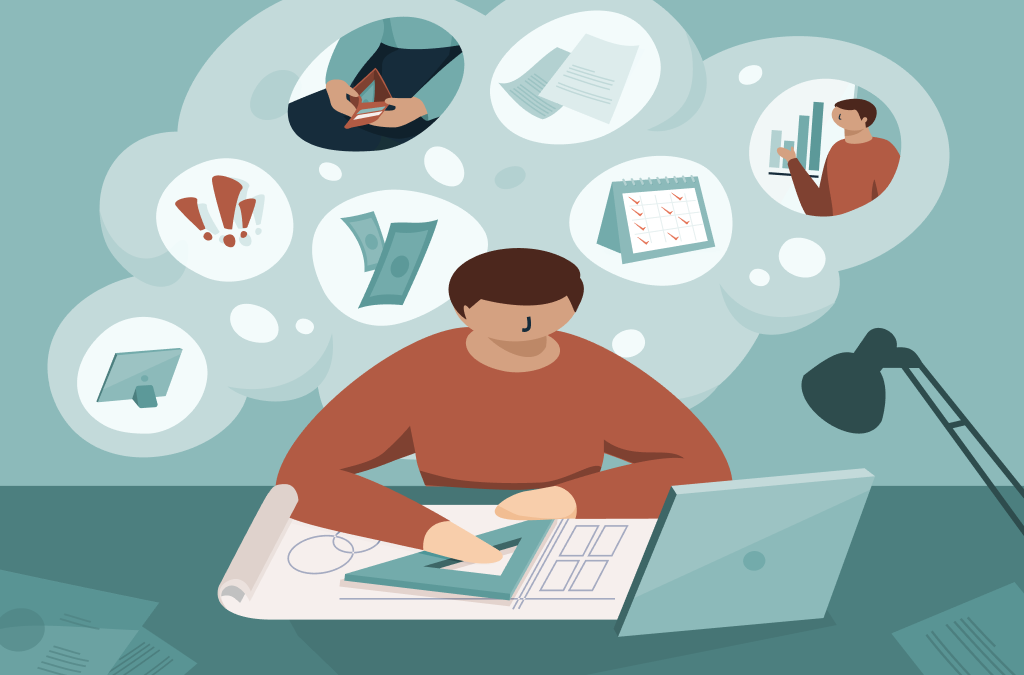
Psychological Needs in the Workplace: How to Meet Them
Deadlines, conflicts, pressure to perform—many people grapple with stressors at work. The extent to which these weigh on someone depends in large part on whether psychological needs are being met at work.

High-Functioning Depression: The Hidden Suffering
When people think of depression, usually intense sadness, low energy, social withdrawal, difficulty getting out of bed, and managing daily life come to mind. But this is not always the case.

Obsessive-Compulsive Disorder: When Thoughts and Actions Become Torture
In this article, we explore what characterizes such thoughts and behaviors as well as how they can be treated.
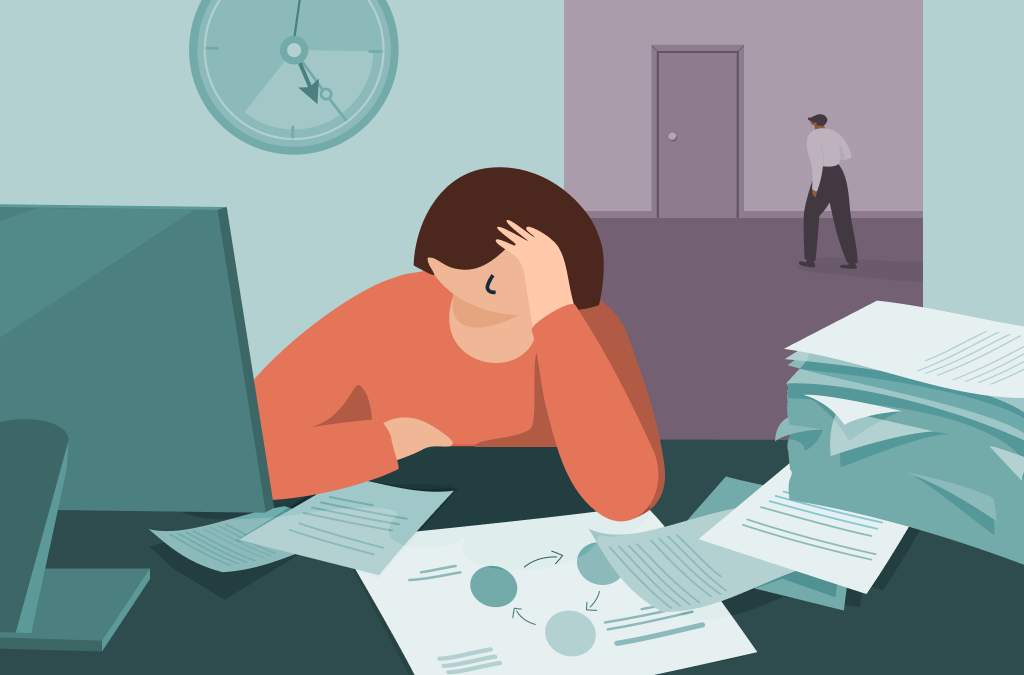
Bullied at Work—Here’s What You Can Do!
In this article, we look at the nature of workplace bullying, its causes and consequences, and what you can do if you are being bullied at work.
